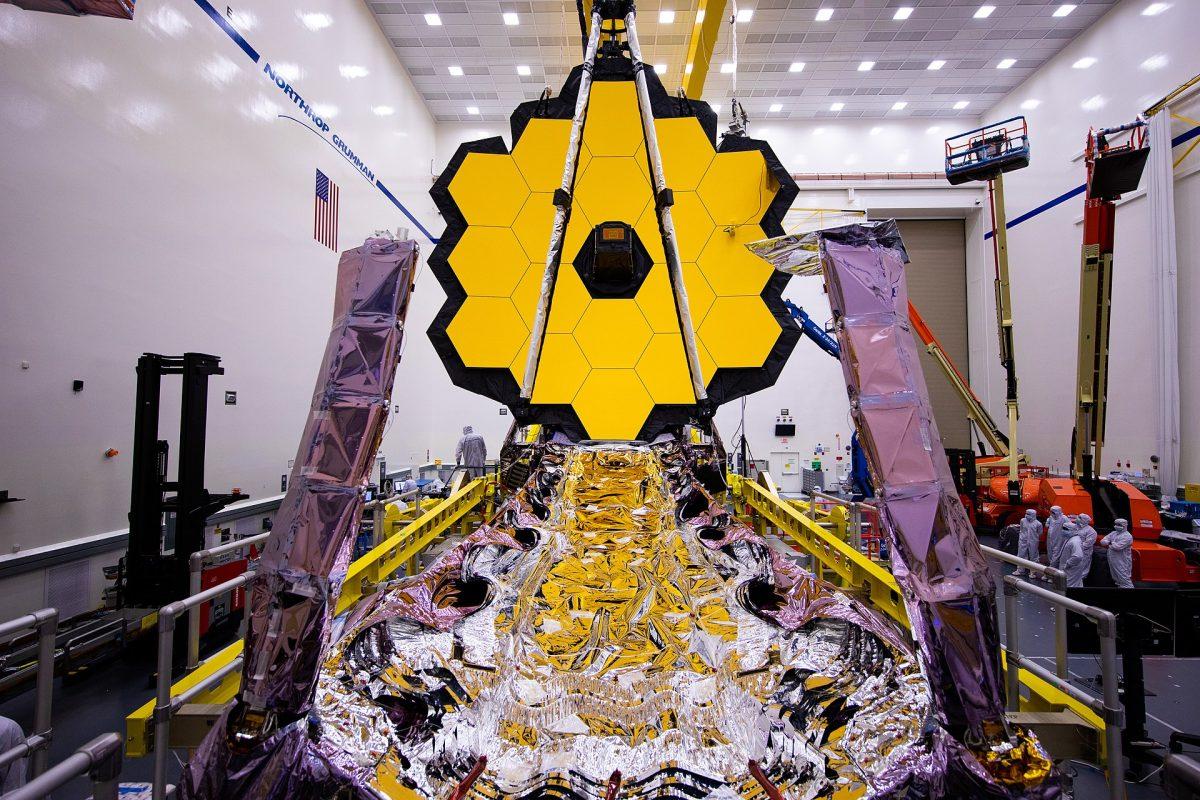Using the newly launched James Webb Space Telescope, or JWST, astronomers at Texas A&M are able to peer farther into the cosmos than ever before.
While studying supernovae, the explosions that occur at the end of a large star’s life, may seem trivial, professor of astronomy Nicholas Suntzeff said supernovae have been the subject of scientific attention in recent years due to their ability to act as benchmarks for time and distance in deep space.
“When a star explodes, it gets to a standard brightness, like a 100 Watt light bulb … you can figure out how far away the light bulb is by how faint it appears,” Suntzeff said. “It’s the same with these exploding stars. As a star explodes in a galaxy, and in any one galaxy every 100 years or so a star will explode like this, we can measure the distance to a galaxy.”
As “standard candles” for distance of the universe, Suntzeff said each supernova provides more evidence that an unknown force speeds up the universe’s expansion.
“By looking at distant supernovae … we found the universe is not slowing down, it’s speeding up as if there’s an anti-gravity causing the universe to expand faster and faster,” Suntzeff said. “We don’t know what it is. We just call it dark energy, but that’s just a name for ignorance.”
Due to the Doppler Effect, as distant objects are moving faster away from Earth than nearby objects, the wavelengths of light they reflect are stretched out and their energy diluted. Part of the reason why the JWST is so effective at observing at long distances, Suntzeff said, is that it observes forms of light that are redder, or lower energy, than the human eye can observe.
“JWST was built to allow us to look into the infrared part of the spectrum,” Suntzeff said. “You want to observe in this region because distant objects, their light gets red shifted as things get farther away … light, if it was emitted in the distant universe, would be in this part of the spectrum.”
The A&M team involved themselves with supernova 2021aefx in the constellation Dorado, the number indicating the year of its discovery. As 2021aefx is extremely distant, the team wanted to confirm if its mechanisms were consistent with more nearby supernovae to support the use of supernovae as cosmic benchmarks.
“When you look at distant objects, you’re seeing them as they were billions of years ago,” Suntzeff said. “Maybe the younger objects … have some sort of slightly different characterization.”
Using the JWST’s ability to analyze the light that it observes to produce a rough analysis of the chemical composition of the supernova’s products, Suntzeff said the A&M team helped discover the star from which the supernova originated was likely a white dwarf, a small, dense star that is the remnant of a sun-like star after all of its hydrogen gas has been exhausted. Scientists theorized 2021aefx was specifically composed of carbon and oxygen, a result that is consistent with a broader class of supernovae known as type 1a supernovae.
“Using JWST, we wanted to see what elemental lines are being emitted by the supernova … there’s cobalt, nitrogen, argon, nickel and all these elements that were not there before the stars blew up,” Suntzeff said. “The thing that blew up was the core of an old star which was made up of carbon and oxygen and when it blew up the carbon and oxygen were fused into heavier elements.”
Professor emeritus of astronomy Kevin Krisciunas said while most white dwarfs lacked the requisite mass to turn into a supernova, if the white dwarf and another star are simultaneously orbiting each other, a white dwarf can absorb enough mass from its companion that it can collapse and create a supernova.
“Say you have a white dwarf with a main sequence sun-like star right next to it,” Krisciunas said. “As the sun-like star swells up to become a red giant, mass can pass from the sun-like star to the white dwarf … When it reaches 1.4 solar masses, it explodes. The sun cannot explode as any kind of supernovae. It doesn’t have a companion star to donate its outer atmosphere to so that the white dwarf reaches 1.4 solar masses.”
The end goal of supernova research, professor of astronomy Lifan Wang said, was to provide further clues to the dark energy mystery.
“The discovery of the accelerating expansion of the universe gave [supernova research] a tremendous boost,” Wang said. “It is now very closely related to fundamental physics.”




















